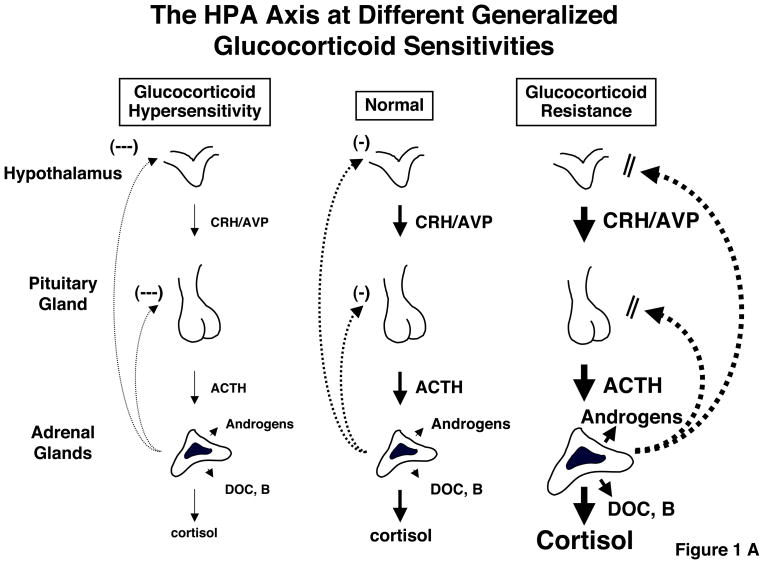Figure 1.
A: Feedback-regulated compensatory changes in the activity of the HPA axis and their effects in peripheral tissues, such as the liver, fat and blood vessels. Note that glucocorticoid sensitivity in the HPA axis and the peripheral tissues can be independently regulated and the former determines the serum free cortisol levels, thus combination of their directions influence net peripheral action of this hormone. ACTH: Adrenocorticotropic hormone; AVP: Arginine vasopressin; CRH: Corticotropin-releasing hormone; DOC: Deoxycorticosterone; B: Corticosterone. Modified from references 68, 73 & 74.
B: Known GR mutations that cause familial/sporadic glucocorticoid resistance syndrome. Localization of GR mutations that cause familial/sporadic glucocorticoid resistance syndrome are shown in the human GR gene (top) and in the human GR protein (bottom). From references 19 & 20.
C: Alteration of net glucocorticoid effects in target tissues by activity of the central HPA axis and peripheral tissue sensitivity to glucocorticoids.
Net glucocorticoid action in peripheral tissues, such as the CNS, liver, fat and vasculature, are determined by two components, the central HPA axis and sensitivity of peripheral tissue to glucocorticoids. From reference 68.



